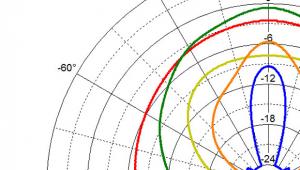Primer: CEA-2010 Page 3
Interpreting CEA-2010 results
One problem with CEA-2010 is that it's an abstract standard. It tells you how a subwoofer will perform in a half-space environment-i.e., in an open area on the ground-at a distance of 1 meter. In a real room, the acoustics will tend to boost the subwoofer's output at low frequencies. Room acoustics will also cause peaks and dips in the response at different frequencies. And of course, you'll probably be listening from 3 or 4 meters rather than 1 meter. So a sub rated to give you 120 dB at 50 Hz at 1 meter might give you just 110 dB at 50 Hz in your listening chair. Or it might give you 126 dB.
Another issue is that few people listen at levels loud enough to distinguish between a sub rated at 118 dB at 50 Hz and one rated at 124 dB at 50 Hz. In my experience, in my modestly large listening room, even at the fairly loud levels I like for movie soundtracks, the difference between a supersub like the SVS PC13-Ultra and a good midpriced sub like the SVS PB-1000 isn't readily apparent except on extreme deep-bass scenes such as the opening of Star Wars, Episode II: Attack of the Clones. In most cases, I have to crank the level several dB louder than I usually do to distinguish between the good subs and the great ones. Anyone who doesn't listen at loud levels doesn't need a top-rated monster sub.
And one more issue: Measuring exact dB levels is notoriously difficult, and in comparisons of my measurements with Audioholics' measurements and those of manufacturers, differences of a couple of dB are common. That's for several reasons: limited accuracy among microphone calibrators, sample-to-sample variaton among subwoofers, differences (temperature, etc.) in the test environment, and normal measurement-to-measurement variation. My measurements are often a dB or two higher than Audioholics', for unknown reasons; both of us are conforming to CEA-2010 procedure. However, these differences don't amount to much. Will you hear a +2 dB difference between two subs? Not in my experience. The critical thing is how consistent the results are at all frequencies. A sub that has only -12 dB less output at 20 Hz than it does at 63 Hz is awesome. A sub that has -30 dB less output at 20 Hz than at 63 Hz isn't so hot.
For home theater enthusiasts, I recommend a sub that delivers at least 120 dB at 40, 50, and 63 Hz, and at least 110 dB at 20, 25, and 31.5 Hz. I'd speculate that most two-channel music listeners would be happy with a sub that delivers 5 dB less output from 40-63 Hz and 10 dB less output from 20-31.5 Hz. These are just general guidelines, though. Home theater enthusiasts who don't listen very loud can make do with less. Audiophiles who really love listening to pipe organ recordings might want more low-frequency output. Etc., etc.
If you browse the reviews on this site, you'll see that many subs have lots of output from 40 to 63 Hz, but their output falls rapidly below 40 Hz. Some don't even have measureable output at 20 Hz. These subs will typically deliver a great sense of "punch," with plenty of impact during crashes and impacts in a home theater soundtrack, but they probably won't give you that satisfying floor shake you'll get with a sub that has more consistent output in the 20-31.5 Hz range.
This has been a pretty long-winded explanation, but I wanted to get all my thoughts in. Thanks for bearing with me! If you have any comments or questions, let us know in the Comments section below.





























































